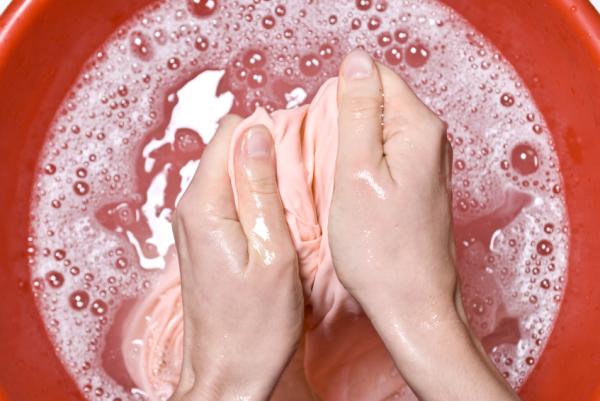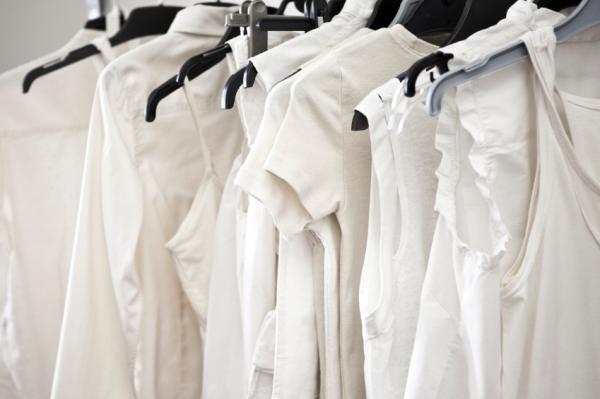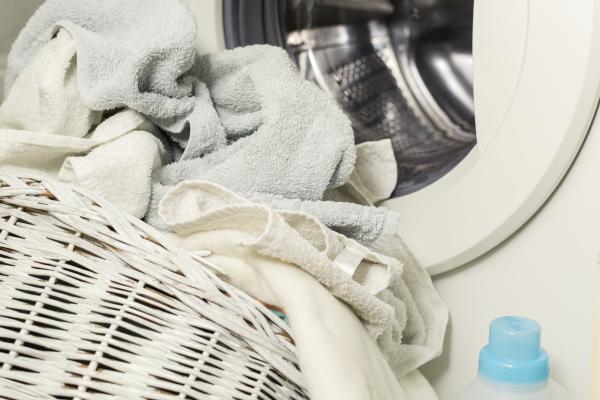How to Use Ammonia to Clean Clothes


Ammonia tackles more than just windows! It excels at breaking down protein-based stains (blood, sweat, food) thanks to its alkaline nature. Plus, a touch of ammonia can boost your detergent's power, loosening dirt for a cleaner wash. Its alkaline nature helps to neutralize and lift stains from fabric fibers. Not only that, but when combined with laundry detergent, ammonia can boost the cleaning power of the detergent. It helps to loosen dirt and grime, making it easier for the detergent to wash them away.
In the following oneHOWTO article we explain how to use ammonia to clean clothes and get rid of the most difficult stains.
How to remove stains with ammonia
Stains happen, but they don't have to ruin your favorite garments. Ammonia, a common household product, can be a powerful tool in your laundry routine when used correctly.
Let's explore how to effectively tackle various stains with ammonia-based solutions, while prioritizing fabric safety:
- In a spray bottle, combine equal parts cool water, laundry detergent, and ammonia. Ensure the chosen detergent is suitable for the fabric you're treating. (Note: Always test the solution on an inconspicuous area of the garment first to check for colorfastness.)
- Apply the solution directly onto the stain, ensuring complete coverage. For best results, pre-treat the stain before washing.
- Let the solution sit on the stain for 30 minutes. This allows the ammonia to break down the stain components.
- After 30 minutes, rinse the treated area with clean, cool water. Repeat steps 1-4 if the stain persists.
Does ammonia stain like bleach?
While ammonia can be used to brighten white clothes, it's important to be aware of some potential drawbacks before adding it directly to your wash cycle. These include the fact that ammonia has a strong odor, irritating fumes, and can damage some fabrics.
For occasional white brightening, a diluted ammonia pre-soak can work, but opt for safer methods if odor or fabric damage is a concern. Always test any solution on a hidden area first.
.


How to soften towels with ammonia
Ever wonder why your once-fluffy towels become stiff and scratchy over time? The main culprit is the fact that mineral deposits from hard water can build up on towel fibers, making them feel rough and inflexible. These deposits can also trap detergent residue, further reducing the towel's absorbency.
Also, overuse of fabric softeners can leave a waxy coating on towels, hindering their ability to absorb water effectively. Finally, towel fibers naturally break down over time, leading to a loss of softness and absorbency.
Luckily, ammonia can be a temporary solution for towels suffering from hard water mineral buildup. Ammonia's cleaning properties can help dissolve some mineral deposits, potentially restoring some of the towel's softness. However, it's important to note that ammonia won't completely remove all minerals, especially from heavily affected towels.
While ammonia can offer a temporary solution, it won't address the underlying cause of hard water or fabric softener buildup. Regular laundering with hot water and a gentle detergent is the best way to prevent towel stiffness and maintain their absorbency. For severely affected towels, consider professional cleaning or replacement.
Now that your towels are feeling soft again with ammonia, optimize their care for long-lasting freshness. Our article explores the best practices for washing towels in the washing machine, ensuring they stay clean and absorbent for longer.

How to remove greasy stains with ammonia
Ammonia can be effective in breaking down grease stains. To do it, you'll need white vinegar (optional), gloves, a well-ventilated workspace, dish soap, and ammonia.
- For stubborn stains, you can pre-treat with white vinegar. Apply a small amount directly to the stain and let it sit for 15 minutes. White vinegar can help loosen grease before tackling it with ammonia.
- In a well-ventilated area and wearing gloves, combine equal parts cool water, dish soap, and ammonia in a small bowl.
- Before applying the solution to the stain, test it on a hidden seam or corner of the garment to ensure it doesn't cause discoloration.
- Apply the solution directly to the greasy stain using a clean cloth. Blot the stain, don't rub, as this can spread the grease.
- Allow the solution to sit on the stain for 30 minutes and then rinse the treated area with clean, cool water to remove the cleaning solution.
Successfully tackled greasy stains with ammonia? Expand your laundry arsenal. Discover the surprising benefits of vinegar in our guide to using it for effective and gentle clothes washing.
How to treat mildew on clothes with ammonia
Mildew on clothes can be a frustrating discovery. While ammonia can be a solution, it's crucial to approach it with caution due to its strong odor, fumes, and potential for fabric damage. Open windows and wear gloves to protect yourself from ammonia fumes. Ammonia should only be used in a well-ventilated area.
- Before applying any cleaning solution, try to remove surface mildew with a dry brush or cloth. This prevents spreading the spores.
- Mix equal parts cool water and ammonia in a small bowl. Test the solution on an inconspicuous area of the garment to ensure colorfastness.
- Using a sponge or soft cloth dampened with the diluted solution, gently clean the mildewed area. Avoid scrubbing, as this can damage the fabric.
- Allow the solution to sit on the affected area for 15 minutes. Then rinse the treated area with clean, cool water to remove the ammonia solution.
Launder the garment according to the care label instructions using your regular detergent.
The best way to deal with mildew is to prevent it in the first place. Ensure proper ventilation in your closet or storage area. Wash clothes promptly after wearing them, especially if they've gotten sweaty. Dry clothes completely before storing them.
Successfully treated mildew with ammonia? Consider a more comprehensive approach!
If you want to read similar articles to How to Use Ammonia to Clean Clothes, we recommend you visit our Home cleaning category.







